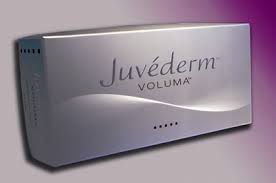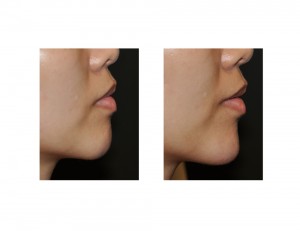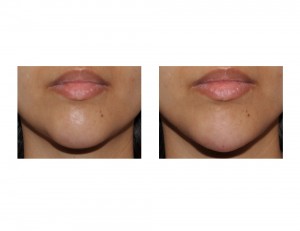Background: Injectable fillers along with Botox has revolutionized facial rejuvenation. While often confused from the public’s perspective, injectable fillers are used for soft tissue enhancement such as softening nasolabial folds and enlarging lips. But as the number and types of injectable fillers has grown over the past decade, their uses has been expanded to include more facial volumizing effects. One of these facial volume effects has been to create skeletal highlights of the bony prominences such as the cheeks, chin, jaw angles and brow ridges.
While no injectable filler can create a permanent facial skeletal enhancement effect, there are some benefits to a temporary one. For those who are interested in having a permanent facial implant but are uncertain that they might like the result, an injectable filler can be a good reversible test. If one does not like the result, the filler will eventually go away…all without ever having to undergo invasive surgery. Conversely, if one likes the effect repeat treatments can be done or one can convert to an actual facial implant.
While any injectable filler can be used for facial skeletal enhancement, many are not appropriate to be so used. To create a facial skeletal enhancement effect the filler must be capable of providing a good soft tissue push as it is injected along the surface of the bone. The ability of any filler to create this push has been traditionally thought of being due to its G prime factor and its cohesiveness. From a rheologic standpoint this makes sense but has never been proven to be true. A recent study has demonstrated that a good lifting effect of a filler is due more to how its hyaluronic acid chains are manufactured and put together than just its G prime factor alone.

Case Study: This 31 year-old female has been having Radiesse injections into her chin for several years for a chin augmentation effect. They always lasted less than one year. The search for along-lasting effect led to try Juvederm Voluma.


Case Highlights:
1) Injectable fillers can be used for facia skeletal augmentation of the cheeks, chin and jaw angles.
2) The type of injectable filler that works best for facial skeletal augmentation must generate a good soft tissue push based on his G prime factor, cohesiveness and how it is manufactured.
3) Juvederm Voluma injectable filler is approved for cheek/midface augmentation but can be used for chin enhancement as well either as a trial implant test or for a temporary augmentation effect.
Dr. Barry Eppley
Indianapolis, Indiana


